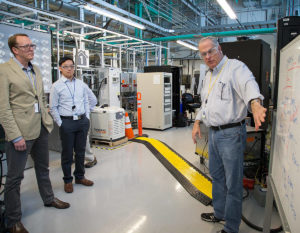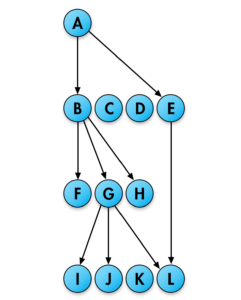The Feeder of the Future

EPRI Simulates a Flexible, Reliable Distribution Feeder with High-Penetration Renewable Resources

In the laboratory, EPRI successfully demonstrated an open architecture to coordinate, control, and dispatch distributed energy resources and to support grid operations. Results suggest that with a robust command-and-control architecture, utilities can use high penetrations of distributed renewables for voltage control, transmission support, and other grid services.
At the National Renewable Energy Laboratory, EPRI built an analog simulator to model a 10-mile distribution feeder connected to hundreds of distributed energy and demand response resources. Standard messages on a recursive network architecture enabled interoperability among the resources, and EPRI software aggregated data from the resources to determine how much power they could supply to or draw from the feeder.
An advanced distribution management system sent requests to the software—such as increase or reduce feeder voltage—that the software fulfilled by controlling groups of resources simultaneously via the recursive architecture. Researchers used this approach to mitigate overvoltage, undervoltage, overload, and other typical distribution grid scenarios.
“This research showed how a distribution feeder with high levels of distributed energy resources and demand response could potentially operate in the future,” said EPRI Technical Executive John Simmins. “With this architecture, a grid operator can aggregate many energy resources and dispatch them as a group to help balance energy supply and demand, and to maintain acceptable grid voltage.”
This approach can be applied to radial grids and mesh networks..
How a Recursive Network Architecture Works
This diagram shows a recursive network architecture that could be used to manage distributed energy resources on a distribution feeder. Each letter represents a network node (connection point) that is connected to generation capacity (such as wind, solar, and energy storage). Each node knows the capacity of and communicates with nodes directly beneath it.
Here’s an example of how a grid operator’s request for capacity might work: Node A requests 500 kilowatts of capacity from B. Because B has only 200 kilowatts of connected resources, it asks F, G, and H each to provide 100 kilowatts. F and H have 100 kilowatts of connected resources, but G has only 10 kilowatts—so G requests 30 kilowatts each from nodes I, J, and L. The chain of communication fulfills the original 500-kilowatt request.


